Other species
{{start}}
{{end}}
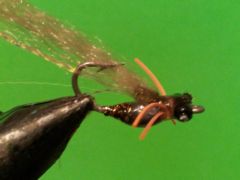
{{+1}}Bonefish shrimp{{-1}}
{{start}}
Bonefish are an amphidromous species which means they migrate from fresh to salt water or from salt to fresh water at some stage of the life cycle other than the breeding period. They live in inshore tropical waters and moves onto shallow mudflats and sand flats to feed with the incoming tide. Adults and juveniles may shoal together, and they may be found singly or in pairs.{{end}}
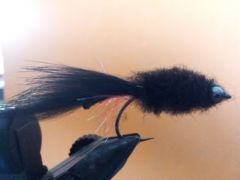
{{+1}}Destroyer – Chatto’s variant{{-1}}
{{start}}
My variant does not include the shroud of mara wool tips around the zonker tail. I have left that off because for me the currents around the body of the fly produce more movement in the tail when it is not shrouded. I like hot spots on flies and accordingly have added a hot spot of red Wapsi palmer chenille under the tail. For my deeper water flies, as many other users have done, I use bead chain eyes rather than the unweighted plastic chain eyes as on the original.{{end}}
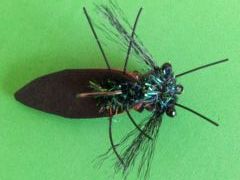
{{+1}}Foam cicada – Chatto’s ‘black prince’{{-1}}
{{start}}
This fly sits well into the surface film like the natural and has a very realistic profile when viewed from below. I have made it smaller than the natural on purpose as flies tied as big as the natural are frustratingly cumbersome to cast on #8 weight outfits that are my preference of the target species mentioned above. The fly lands with a good audible fish attracting 'plop' and with its outstretched wings that are only about half as long as the natural still wiggle with the slightest movement in a very enticing way.{{end}}
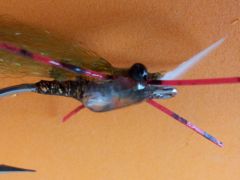
{{+1}}Topwater sand stripper{{-1}}
{{start}}
This fly is modelled on the most successful estuary and inshore fly that I have ever fished with my prawn fly. For me in those shallow water salt water environments where you need a fly that you can fish deep in and around snags and other structure, can be fished at a range of depths depending on fly line and retrieve and swims hook point up to reduce hooking up on that very structure that holds fish my prawn fly out-fishes every other fly I have tried.{{end}}
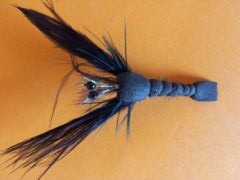
{{+1}}Floating red claw{{-1}}
{{start}}
This fly is a variation to my original yabby pattern and has been designed to be fish on a sinking line. I like to fish them, in water from 1 to 4 meters deep, either as a single fly or in a team of two flies as a point fly. If fishing them in a team I like the dropper with the second fly to be 25cm long and 1.2 meters above the point fly.{{end}}
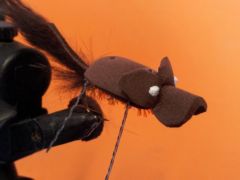
{{+1}}Chatto’s foam mouse{{-1}}
{{start}}
This little mouse lands right way up most of the time, swims well and has a reasonable mouse profile. The eyes and the ears are really only for the angler and hopefully add a little confidence that the fly is a least a little representational.{{end}}

{{+1}}Fusion – soft plastic lures as flies{{-1}}
{{start}}
These soft plastic / flies are best fished in the same way as fishing a soft plastic on spin gear. I generally fish them using a #8 to #10 weight fly rod depending on the weight of the head and on a fast sinking fly line so that I can get them a little deeper.{{end}}
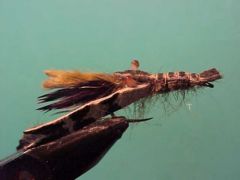
{{+1}}Zonker yabby / crayfish{{-1}}
{{start}}
Over the years I have experimented with various Yabby Patterns and whilst some have looked great unfortunately they have all been “dogs” to fish or more correctly to cast. Generally rather than using them I have reverted to fishing a weighted woolly bugger instead. Well all that has now changed and I now have a Yabby in my fly box that I have confidence in.{{end}}
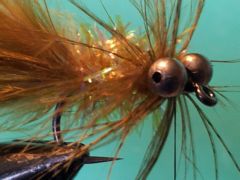
{{+1}}Double eyed, soft hackle dog nobbler{{-1}}
{{start}}
At the same time the woolly bugger was evolving in the US in England a similar fly that became known as a dog nobbler was also evolving. Dog nobbler flies were heavily weighted for use in deeper water, were generally not palmered with a hackle and often were tied with bead chain eyes.{{end}}














